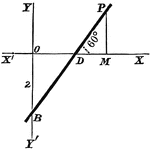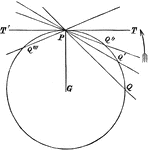
Lighthouse
Tangrams, invented by the Chinese, are used to develop geometric thinking and spatial sense. Seven figures…
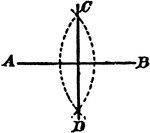
Construction Of A Line Divided In Equal Parts
An illustration showing the construction used to divide a line AB into two equal parts; and to erect…
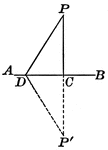
Perpendicular Line Drawn To a Given Line From an External Point
Illustration showing that the perpendicular is the shortest line that can be drawn to a straight line…
Straight Line With Points Divided Into Equal Parts
An illustration of a straight line with 5 points dividing it into 4 equal parts. Multiple of a given…

Intersecting Straight Lines
Illustration of two lines intersecting at a point. This can be used to show vertical angles.
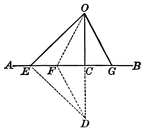
Lines Drawn From the Same Point in a Perpendicular to a Given line, Cutting Off Segments
Illustration showing two straight lines drawn from the same point in a perpendicular to a given line,…

Lines Drawn From the Point C to the Extremities of the Straight line AB
Illustration showing two lines CA and CB drawn from the point C to the extremities of the straight line…
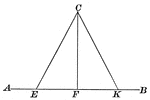
Lines Drawn to Another Line to Form Triangle
Illustration of two straight lines drawn from a point in a perpendicular to a given line, cutting off…
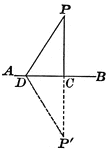
Perpendicular Line Drawn to a Given Line from an External Point
Illustration showing only one perpendicular can be drawn to a given line from a given external point.

Parallel Lines
Illustration showing two straight lines in the same plane perpendicular to the same straight line are…

Parallel Lines
Illustration showing if a straight line is perpendicular to one of two parallel lines, it is perpendicular…
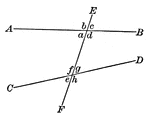
Lines Cut By A Transversal
Illustration showing that a transversal is a straight line that cuts two or more straight lines.

Parallel Lines Cut By A Transversal
Illustration showing that when three or more parallel lines intercept equal parts on one transversal,…

Parallel Lines Cut By A Transversal
Illustration showing that if two parallel lines are cut by a transversal, then the alternate interior…

Parallel Lines Cut By A Transversal
Illustration showing that when two straight lines in the same plane are cut by a transversal, if the…
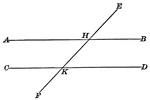
Parallel Lines Cut By A Transversal
Illustration showing that when two parallel lines are cut by a transversal, the exterior-interior angles…
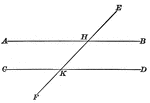
Parallel Lines Cut By A Transversal
Illustration showing that when two parallel lines are cut by a transversal, the two interior angles…

Lit Candle
Tangrams, invented by the Chinese, are used to develop geometric thinking and spatial sense. Seven figures…

Lit Candle
Tangrams, invented by the Chinese, are used to develop geometric thinking and spatial sense. Seven figures…

Lit Candle
Tangrams, invented by the Chinese, are used to develop geometric thinking and spatial sense. Seven figures…

Lit Candle
Tangrams, invented by the Chinese, are used to develop geometric thinking and spatial sense. Seven figures…

Lying Fox
Tangrams, invented by the Chinese, are used to develop geometric thinking and spatial sense. Seven figures…

Lying Fox
Tangrams, invented by the Chinese, are used to develop geometric thinking and spatial sense. Seven figures…

Lying Fox
Tangrams, invented by the Chinese, are used to develop geometric thinking and spatial sense. Seven figures…
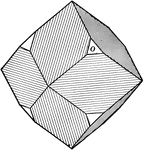
Magnetite
"Isometric. Octahedral habit, sometimes twinned octahedrons. Dodecahedron at times, either alone or…

Man
Tangrams, invented by the Chinese, are used to develop geometric thinking and spatial sense. Seven figures…
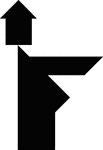
Man
Tangrams, invented by the Chinese, are used to develop geometric thinking and spatial sense. Seven figures…

Man
Tangrams, invented by the Chinese, are used to develop geometric thinking and spatial sense. Seven figures…
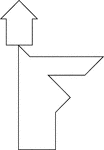
Man
Tangrams, invented by the Chinese, are used to develop geometric thinking and spatial sense. Seven figures…

Man
Tangrams, invented by the Chinese, are used to develop geometric thinking and spatial sense. Seven figures…
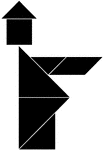
Man
Tangrams, invented by the Chinese, are used to develop geometric thinking and spatial sense. Seven figures…

Man
Tangrams, invented by the Chinese, are used to develop geometric thinking and spatial sense. Seven figures…
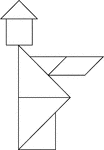
Man
Tangrams, invented by the Chinese, are used to develop geometric thinking and spatial sense. Seven figures…

Man in Hat Facing Left
Tangrams, invented by the Chinese, are used to develop geometric thinking and spatial sense. Seven figures…

Man in Hat Facing Left
Tangrams, invented by the Chinese, are used to develop geometric thinking and spatial sense. Seven figures…

Man in Hat Facing Left
Tangrams, invented by the Chinese, are used to develop geometric thinking and spatial sense. Seven figures…
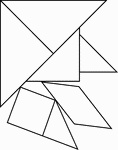
Man in Hat Facing Left
Tangrams, invented by the Chinese, are used to develop geometric thinking and spatial sense. Seven figures…
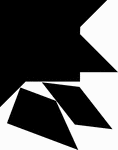
Man in Hat Facing Right
Tangrams, invented by the Chinese, are used to develop geometric thinking and spatial sense. Seven figures…

Man in Hat Facing Right
Tangrams, invented by the Chinese, are used to develop geometric thinking and spatial sense. Seven figures…
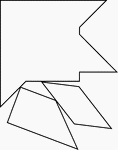
Man in Hat Facing Right
Tangrams, invented by the Chinese, are used to develop geometric thinking and spatial sense. Seven figures…
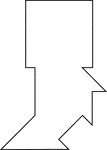
Man in Hat Facing Right
Tangrams, invented by the Chinese, are used to develop geometric thinking and spatial sense. Seven figures…
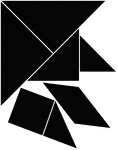
Man in Hat Facing Right
Tangrams, invented by the Chinese, are used to develop geometric thinking and spatial sense. Seven figures…
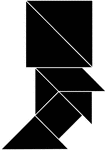
Man in Hat Facing Right
Tangrams, invented by the Chinese, are used to develop geometric thinking and spatial sense. Seven figures…

Man in Hat Facing Right
Tangrams, invented by the Chinese, are used to develop geometric thinking and spatial sense. Seven figures…
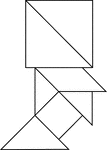
Man in Hat Facing Right
Tangrams, invented by the Chinese, are used to develop geometric thinking and spatial sense. Seven figures…

Man Walking
Tangrams, invented by the Chinese, are used to develop geometric thinking and spatial sense. Seven figures…

Man Walking
Tangrams, invented by the Chinese, are used to develop geometric thinking and spatial sense. Seven figures…

Man Walking
Tangrams, invented by the Chinese, are used to develop geometric thinking and spatial sense. Seven figures…

Man Walking
Tangrams, invented by the Chinese, are used to develop geometric thinking and spatial sense. Seven figures…
Man Wearing a Tuxedo
Tangrams, invented by the Chinese, are used to develop geometric thinking and spatial sense. Seven figures…
Man Wearing a Tuxedo
Tangrams, invented by the Chinese, are used to develop geometric thinking and spatial sense. Seven figures…
Man Wearing a Tuxedo
Tangrams, invented by the Chinese, are used to develop geometric thinking and spatial sense. Seven figures…
Man Wearing a Tuxedo
Tangrams, invented by the Chinese, are used to develop geometric thinking and spatial sense. Seven figures…
